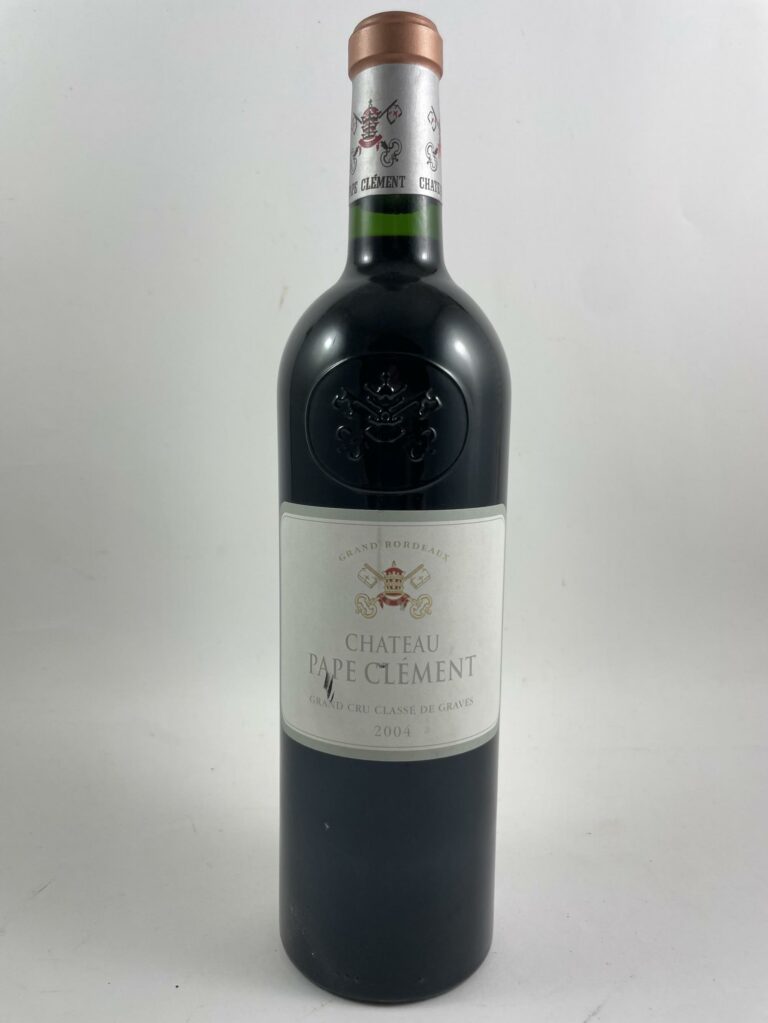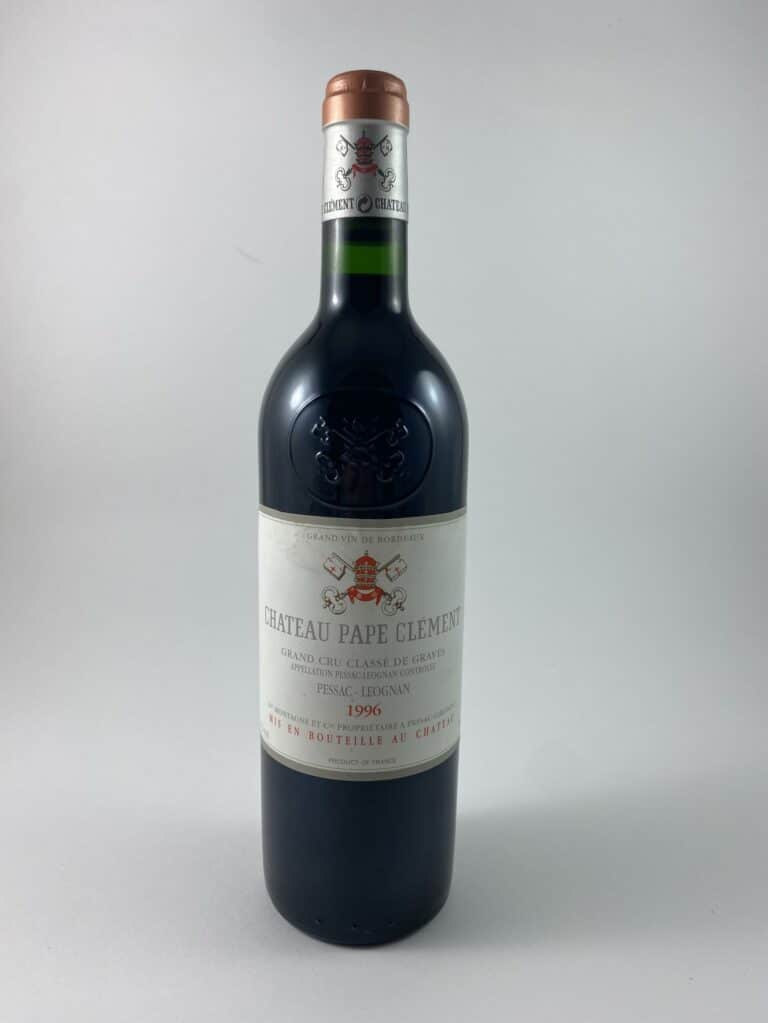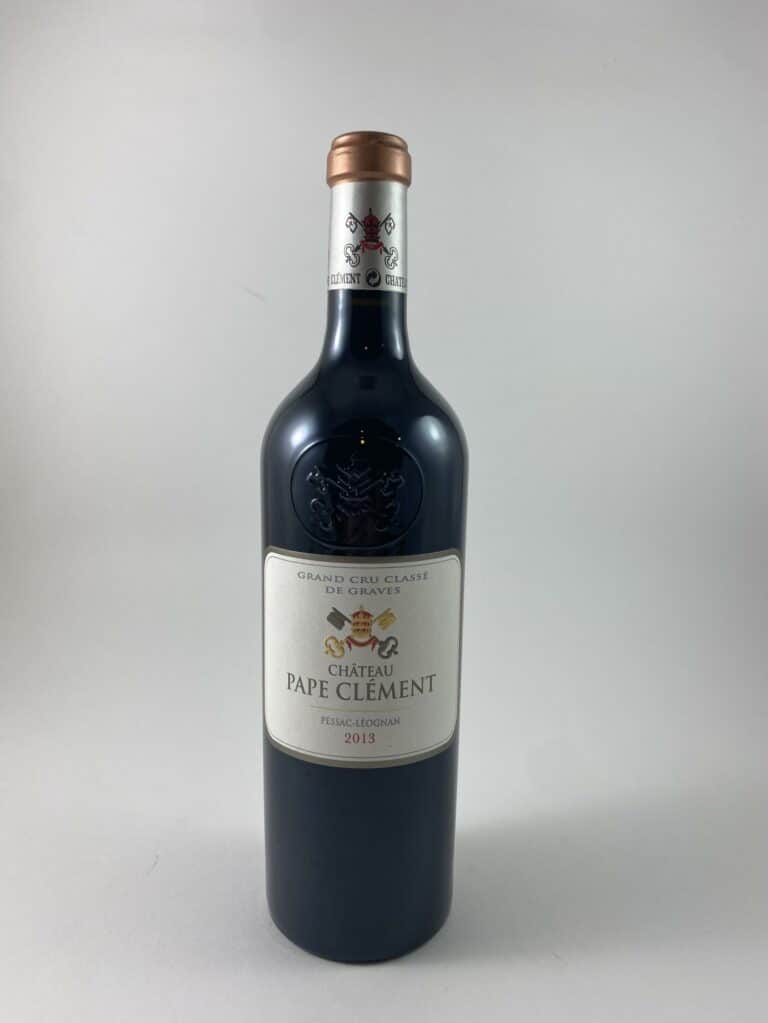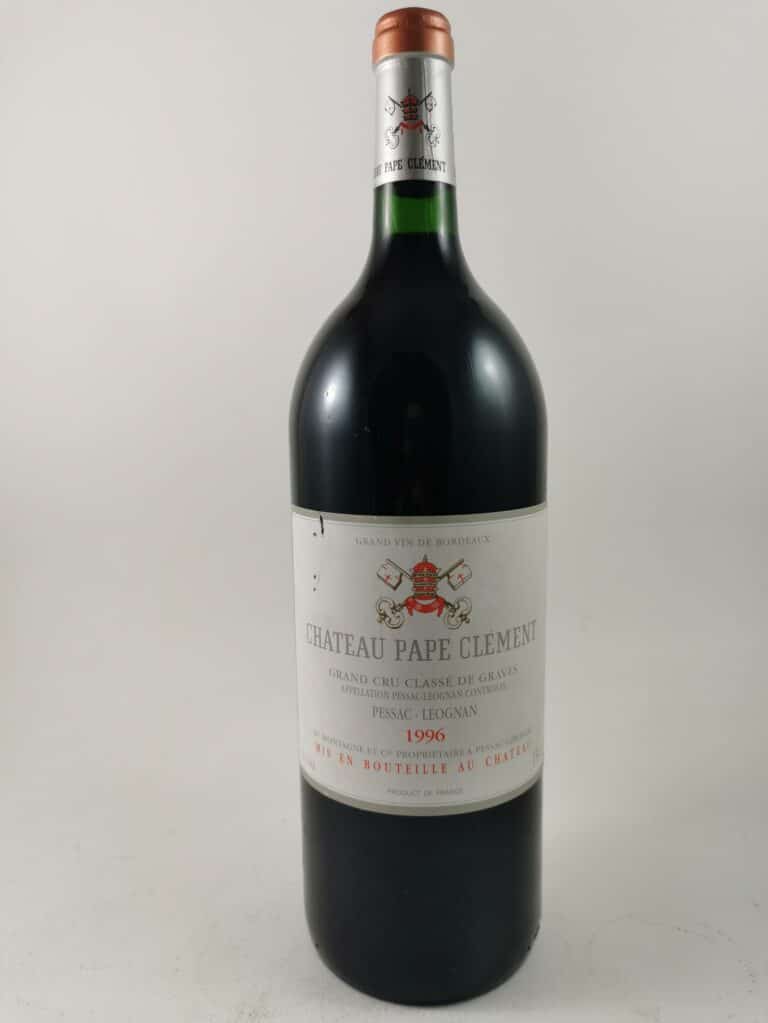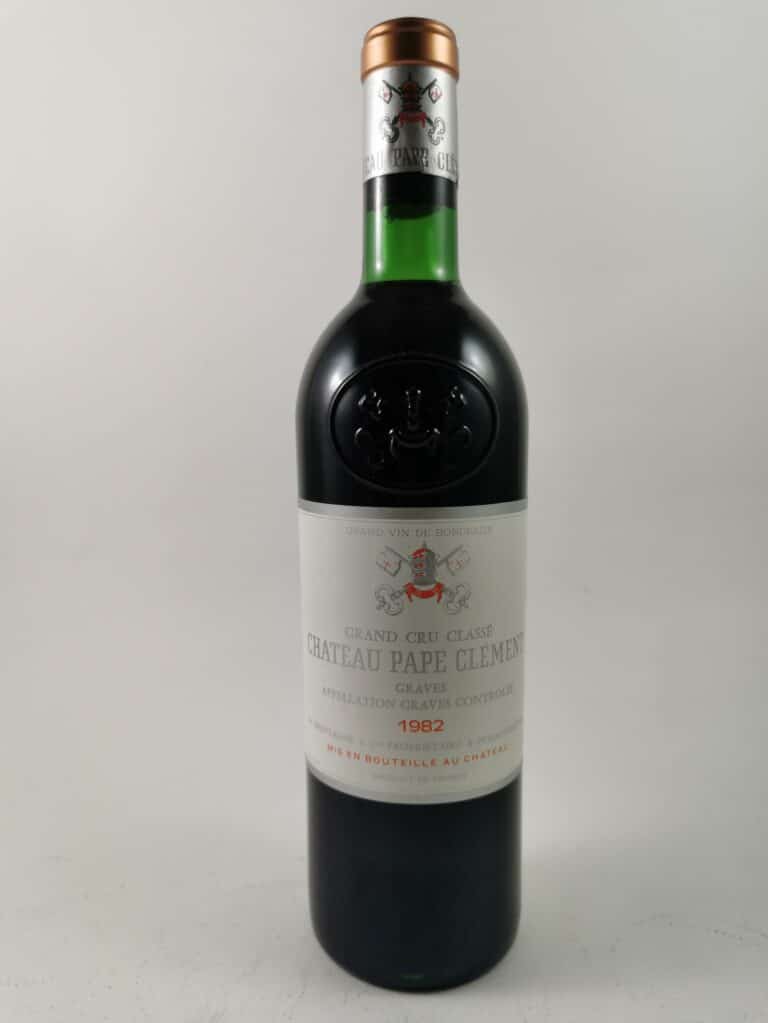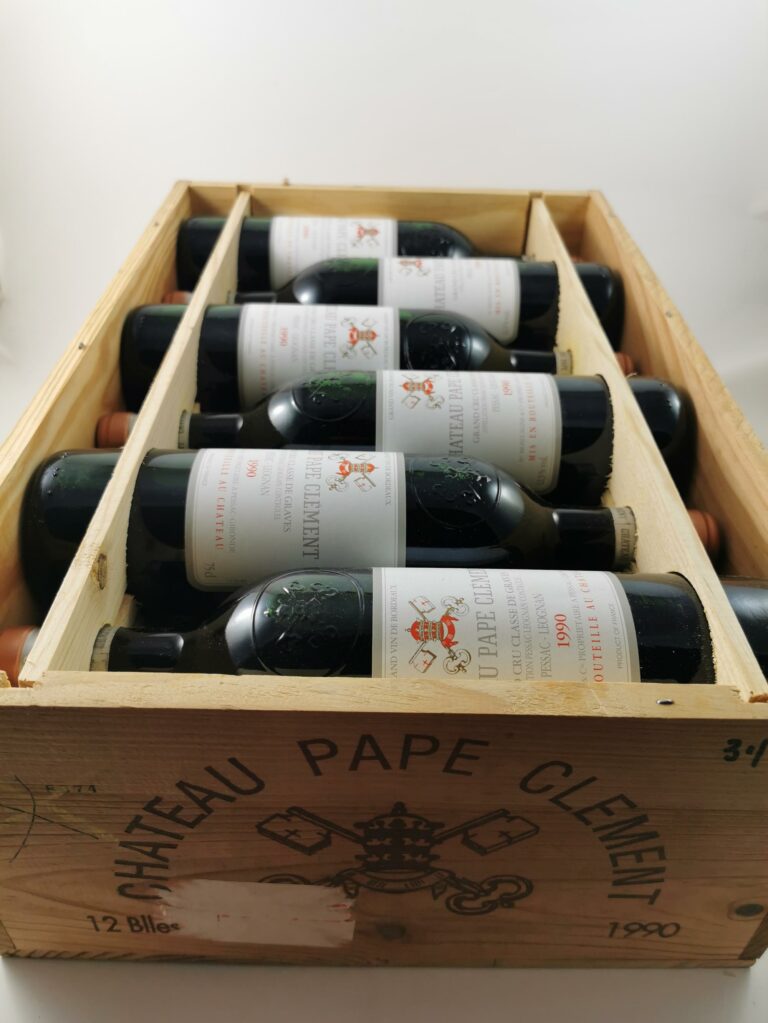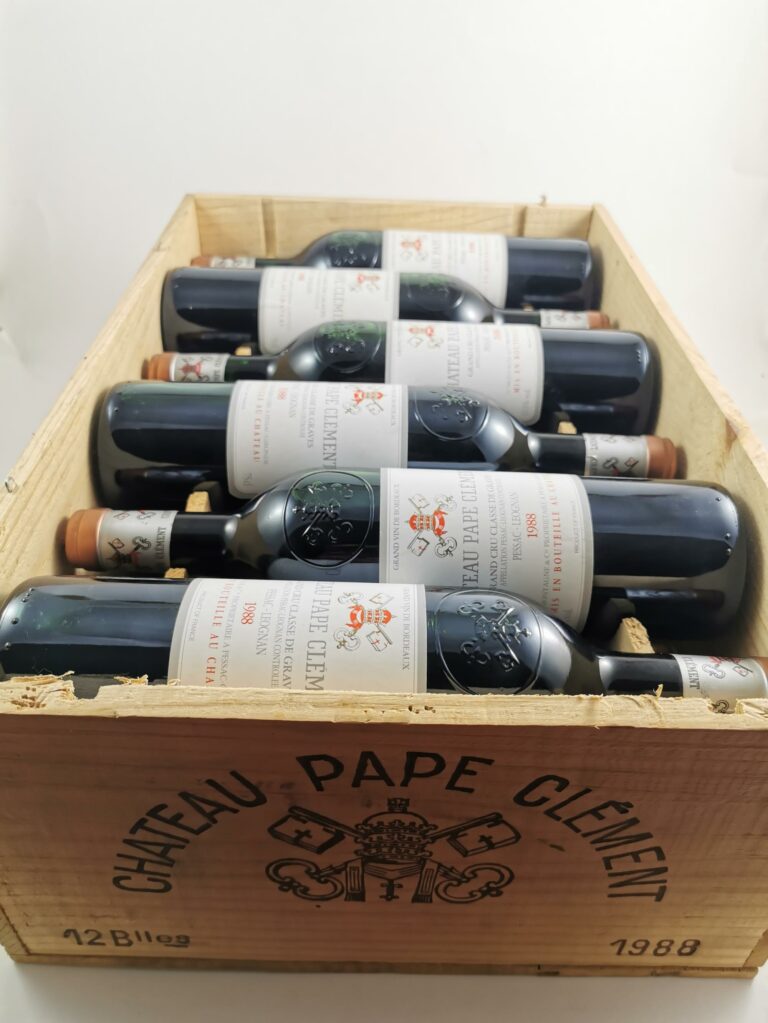Wines of Château Pape Clément
The history of Château Pape Clément
Château Pape Clément is a 60-hectare wine estate located in Pessac Léognan, a few kilometers from Bordeaux. The wine produced by Château Pape Clément is one of the Grands Crus Classés de Graves.
The history of this château began in 1299, when Bertrand de Goth was appointed Archbishop of Bordeaux. This is how he came to own the vineyard, formerly known as “La Mothe”. After carrying out various works and extensions to the winery, Bertrand de Goth was chosen to succeed Benedict XI in 1305. He became pope under the name of Pope Clement. He subsequently had to part company with La Mothe. The estate then reverted to the Archbishop of Bordeaux, and Château La Mothe was renamed Château Pape Clément. During this period, this was one of the first vineyards in France to implement the alignment of vines in rows to facilitate soil ploughing. In the past, the vines were crowded together in the plots. Château Pape Clément will continue to be run with continuity and quality for five centuries. Wine production was essentially reserved for the archbishop.
During the French Revolution, Château Pape Clément was seized and put up for public auction. As a result, Château Pape Clément has had a succession of owners. In 1858, Château Pape Clément was bought by Jean-Baptiste Clerc, who decided to expand the vineyard and change the way wine production was managed. This will enable Château Pape Clément to produce wines of a higher quality, just behind those of Château Haut-Brion, sold at the same price as wines belonging to the Médoc’s second great classified growths.
However, in the 19th century, vine diseases, devastating hail and the economic crisis did not spare Château Pape Clément. Almost the entire vineyard was destroyed. But in 1939, Paul Montagne bought Château Pape Clément and decided to restore it to its former glory. In 1959, Château Pape Clément’s red wine was included in the Grand Cru Classé de Graves classification. A few years later, his son took over the estate alongside Bernard Magrez, a very important man in the wine world and sole owner of four grands crus classés in Bordeaux. Bernard Magrez became the owner of Château Pape Clément in 1985. He renovated the château and, with the help of oenologist Michel Rolland, improved the quality of the wines.
In 2003, after a great deal of work and innovation to produce a wine of excellence, the new barrel cellar is operational. And in 2007, it was the turn of the vat room and its oak vats to be renovated. Château Pape Clément received a 100/100 rating from Robert Parker in 2009, making it not only a landmark year but also a fine reward for the many accolades and quality work carried out over the years.
Terroir and vinification of Château Pape Clément wines
The terroir
Château Pape Clément is part of the “Pessac-Léognan” appellation d’origine contrôlée, located in the Graves wine-growing area.
The 60-hectare vineyard is based on a soil with exceptional components. The domaine’s terroir lies on the oldest of the alluvial terraces known as the “nappe des graves pyrénéennes”. A thin film of more recent Garonne gravel deposited a million and a half years ago marks the originality of the estate.
The red grape varieties (30 hectares) are mainly Cabernet Sauvignon (60%) and Merlot (35%). Cabernet Franc and Petit Verdot are also present (5%). The white wine is composed of Sauvignon Blanc (45%), Sémillon (45%) and Muscadelle and Sauvignon Gris (10%).
The vines remain relatively young. The average age is 40 for the reds and 18 for the whites. Planting density is high: from 7,700 to 9,000 vines/ha, which, together with the grassing of the clay areas, contributes to competition that favors quality ripening. The vines are regularly pruned, thinned out and thinned out to ensure healthy, measured growth over time. It is worked by animal traction (horses and oxen).
The team at Château Pape Clément and its owner Bernard Magrez attach immense importance to respecting biodiversity in the vineyard. The estate also holds the HVE-3 label.
The vinifications
Recently, our technical teams have been using a drone to follow the evolution of the vine’s vegetative cycle in order to assess the stage of ripeness of the grapes, before harvesting them at the right time.
During the harvest, an initial sorting is carried out in the vineyard, followed by manual de-stemming, grain by grain, with a second sorting on the table. The harvest is gravity-fed into small wooden vats to encourage parcel-by-parcel vinification.
The best aromas are extracted by low-temperature pre-fermentation maceration. Regular manual punching of the cap is then carried out during the long maceration (30 to 40 days). Malolactic fermentation takes place in barrels, and the wine is aged for 18 months.
The white wine, which is much sought-after but also much more confidential, is vinified in Burgundy barrels, where the wood comes from the forests of the Jura and Vosges.
The different wines and vintages of Château Pape Clément
The wines
Château Pape Clément red is the château’s grand vin. Made up of 56% Cabernet Sauvignon, 40% Merlot, 4% Cabernet Franc, it benefits from special attention, with manual de-stemming grain by grain.
Château Pape Clément blanc is composed of 50% Sauvignon blanc, 40% Sémillon and 10% Sauvignon gris. Vinification is carried out by filling the entirely manual pneumatic press. Whole-berry pressing with very slow pressure build-up in an inert atmosphere to protect the aromas. The juice from the press is then poured by gravity into barrels.
The reds are refined, with intense, fresh aromas. The whites are characterized by a strong minerality and smokiness typical of Pape Clément.
Clémentin du Pape Clément is the second wine produced in both colors.
L’Âme de Pape Clément is the third wine produced in two colors.
Vintages
We recommend the following vintages, which have nothing left to prove: 1928, 1945, 1986, 1990, 1996, 2000, 2005, 2009, 2010, 2016.
Interested in Pessac-Léognan wines? Treat yourself to a cuvée of this wine, which we have in stock.
See also our wines for the following domains:

